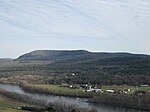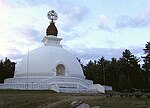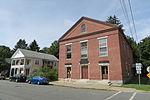Robert Frost Trail
Hiking trails in MassachusettsHolyoke RangeLong-distance trails in the United StatesMetacomet Ridge, MassachusettsProtected areas of Franklin County, Massachusetts ... and 1 more
Protected areas of Hampshire County, Massachusetts

The Robert Frost Trail is a 47-mile (76 km) long footpath that passes through the eastern Connecticut River Valley of Massachusetts. The trail runs from the Connecticut River in South Hadley, Massachusetts to Ruggles Pond in Wendell State Forest, through both Hampshire and Franklin County and includes a number of scenic features such as the Holyoke Range, Mount Orient, Puffer's Pond, and Mount Toby. The trail is named after the poet Robert Frost, who lived and taught in the area from 1916 to 1938.
Excerpt from the Wikipedia article Robert Frost Trail (License: CC BY-SA 3.0, Authors, Images).Robert Frost Trail
Long Plain Road,
Geographical coordinates (GPS) Address Nearby Places Show on map
Geographical coordinates (GPS)
| Latitude | Longitude |
|---|---|
| N 42.487777777778 ° | E -72.5375 ° |
Address
Mount Toby State Forest
Long Plain Road
01351
Massachusetts, United States
Open on Google Maps









